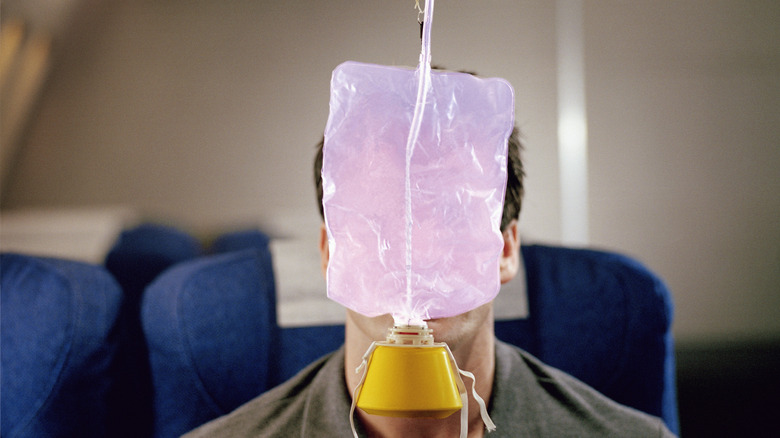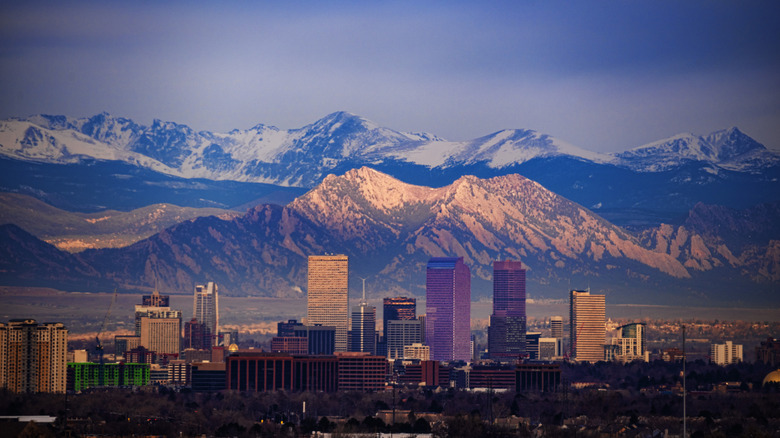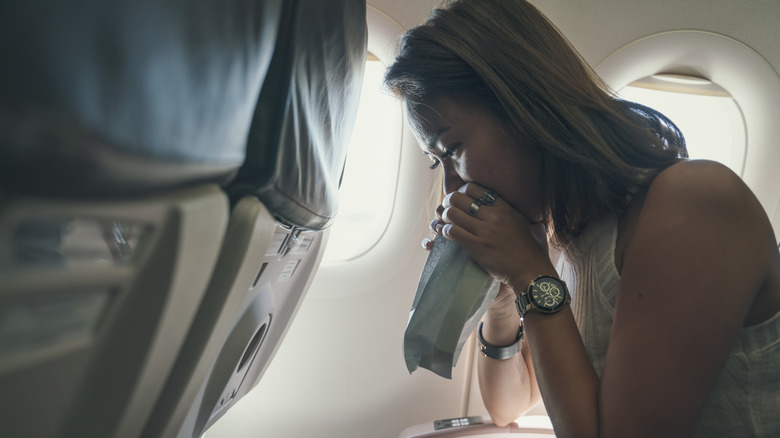The Most Turbulent Flight Route Of 2024 Has Been Revealed
Sitting on a plane that is unsteady and shaky can really stir up some panic and discomfort; it's one of the worst things to experience on a regular flight. Unfortunately, some routes are borderline famous for unavoidable heavy turbulence. While turbulence can be very uncomfortable, there are ways to manage it as a passenger if you're prepared in advance, and knowing those shaky routes is a good way to start.
That's why knowing which routes had the worst turbulence in 2024 can only be a good thing. The answer has been provided thanks to a comprehensive analysis by Turbli, a turbulence forecasting tool that collects and analyzes data from numerous meteorological sources and tracks over 15 million flights. Based on the results, if you're flying between Albuquerque (ABQ) and Denver (DEN), you're in for a bumpy ride — and the worst turbulence in the United States. Read on to understand why this flight route was deemed the one with the most turbulence and what you can do about it as a passenger.
Why does the Albuquerque to Denver flight have the worst turbulence?
According to Turbli, the flight connecting Albuquerque (New Mexico) to Denver (Colorado) has an average Eddy Dissipation Rate (EDR, the unit used in aviation to measure turbulence) of 17.751. Based on the geographical location of the two cities and their proximity to the Rocky Mountains, the route is influenced by mountain wave activity. The Rocky Mountains are known for their complex terrain, and crossing above them leads to mountain wave turbulence, where the airflow is disrupted by that very terrain. These waves can lead to mild and sometimes even severe turbulence, depending on factors such as wind speed, direction, and flight altitude. While many pilots tend to avoid altitudes where mountain waves are active, it is very difficult on a short-haul flight such as Albuquerque to Denver.
As both airports are situated at over 5,000 feet above sea level, these elevations add more unfortunate possibilities to encountering weather-related challenges, especially during takeoff and landing. Along the route, the sudden extreme weather patterns also increase the likelihood of experiencing turbulence. The Rocky Mountain area is also known for seemingly random thunderstorms and uncontrollable weather, another factor that influences the high EDR on this route.
How passengers can prepare for a bumpy ride
In most cases, turbulence is not dangerous but can lead to discomfort, and there are certain safety measures that passengers should be aware of (such as buckling up your seatbelt). When turbulence is on the horizon, the pilots will often alert passengers by making an announcement and putting the seatbelt sign on. If you happen to be flying between Albuquerque and Denver, knowing that this route is popular for its turbulence in advance and understanding its causes can relieve some of the anxiety and confusion if things get a little shaky in the skies.
To help reduce the anxiety and fear of flying when turbulence hits, listening to music can be very comforting. There are also meditation and breathing techniques that can help slow your heart rate and promote relaxation, such as the 4-7-8 breathing tactic, where passengers feeling anxious should exercise the following steps: Start by inhaling through the nose for four counts, then hold your breath for seven counts, before exhaling slowly through your mouth for eight counts. It is recommended to practice this stress-relieving tactic until you feel calm to help cope with turbulence. If you're still worried about the turbulence and wish to avoid it as much as possible, choose an early morning flight as the weather is more stable during this time leading to less turbulence.


